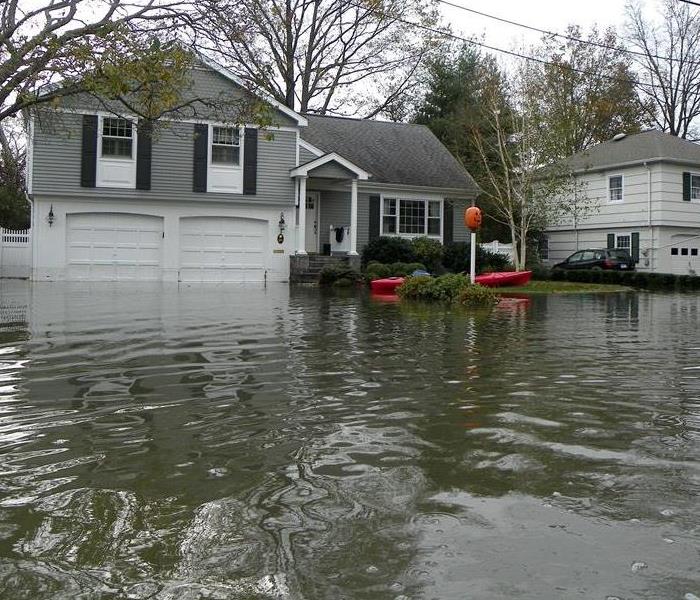Water Damage Restoration Tips For Your House
6/28/2017 (Permalink)
Water Damage Restoration Tips For Your House After A Flood
A few years back, homes, business properties and personal items devastated by flood water were considered lost. With innovations in technology, however, the losses due to flood damage can now be restored to their former state. The process is not easy though for it requires extensive mopping up and drying of the property after severe water damage.
Flood water in home or business can damage your walls, floors, carpets and other personal belongings too. Extracting the water is impossible without proper equipment while sun drying does not guarantee your assets’ restoration to their former state before the incident. There is also an additional risk that the water in home might have damaged electrical equipment or wires. Anyone tampering with either could be in for a horrible electrocution during the water cleanup and restoration.
For these reasons, water cleanup and restoration is best handled by professionals. They have the requisite experience, state-of-the-art equipment and techniques to do the job properly and offer mitigation against further damage. If the renovation job requires extensive work, promptness in beginning the works is paramount. The less the time-frame between flood damage and refurbishment, the greater the ease of reinstating a property or item to its preloss state. There are four fundamental steps to follow with any renovation job after water damage:
1. Removal of the flood water
The first important step to restoring a property after damaging from water in home or business premise is removing the stagnant water. Often, a submersible pump is used to remove the water accumulation in various structures around the premises. The pump is highly efficient at its job and makes drying of entire submerged sections easier. As a result, it helps in mitigation by preventing further flood damage in the premises.
2. Moisture Mapping
It is crucial to get an idea of the extent of water damage and take the first mitigation steps against mold growth. The step uses detection equipment to obtain and appropriately map the moisture values on the property. Properly trained technicians use infrared and digital imaging to determine the damage extent.
3. Mold Inspection and Removal
After moisture mapping, the house will need to be prepared to repel mold and mildew. Any residual stagnant water in business or homestead leads to a favorable habitat for the fungi to thrive thus mitigation against it is essential. Water cleanup professionals make use of special detergents to sterilize the area and make the surroundings unfavorable for mold growth. Some renovation firms take advantage of deodorization and ventilation during this step to remove any airborne contaminants and lingering, unpleasant odors.
4. Water Drying
This last step ensures the property is completely dry and humidity is brought back to its normal state after flood damage. There are various water drying techniques and the one used will depend on the situation’s severity. These techniques include:
• Air Movers – They help dry the establishment by controlling humidity and promoting air circulation. Working in sections, the air movers remove liquids from all porous materials including carpets and wood. Any remaining water in home or business premises is left for more sophisticated machines.
• Dehumidifiers – dehumidifiers remove moisture from the air and help extract any remaining water in business or home environment. Broadly, professionals use either desiccant or refrigerant dehumidifier. Desiccant dehumidifiers use raw materials that naturally absorb moisture from the environment. Conversely, refrigerant dehumidifiers operate by cooling the air to make it reduce its ability to retain water. As a result, condensation occurs around the equipment’s cooling coils. Applying these machines on a large scale promptly extracts excess humidity from the air leaving no more water in business or household and thus no further water damage. The particular type of equipment, however, depends on the hired company and the how extensive the restoration job is.
With the right professionals, a successful water cleanup is possible, and any damage from water in business or home establishment can be fixed. Each job, however, is unique and requires prompt, proper investigation. This helps come up with a plan based on the steps above to restore the property after water damage. Visit http://www.SERVPROmattesonhomewood.com for more information on water damage





 24/7 Emergency Service
24/7 Emergency Service
